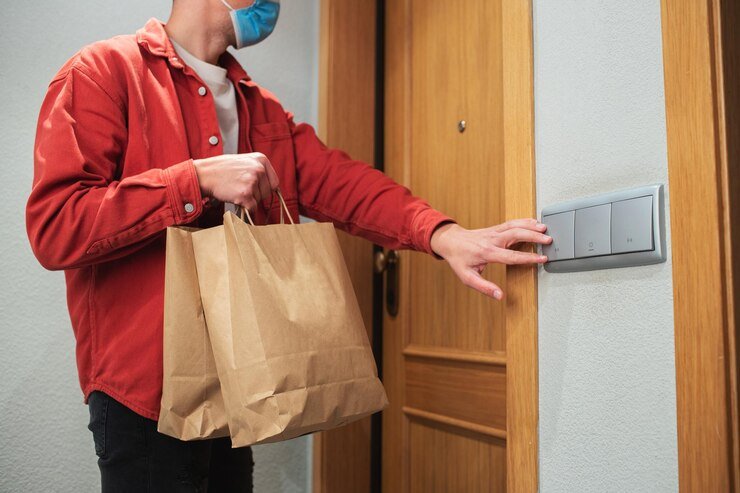Creating a DoorDash clone is a lucrative business opportunity for entrepreneurs looking to tap into the booming on-demand food delivery market. With the growing popularity of clone app development, businesses can leverage existing models like DoorDash to build their successful platforms. But before diving into development, it’s crucial to understand the costs involved. This article breaks down the factors that affect the cost of creating a DoorDash clone and provides a detailed overview to help you budget effectively.
Understanding What a DoorDash Clone Is
A DoorDash clone replicates the popular food delivery app, designed to function similarly but tailored to a different business model or market. These clones often retain the core functionalities, such as user registration, restaurant listing, food ordering, payment gateway integration, real-time tracking, and customer support. However, clone app development allows customization to add unique features and branding elements to distinguish your platform from competitors.
Key Factors Influencing the Cost of a DoorDash Clone
The cost of developing a DoorDash clone can vary significantly based on several factors. Understanding these elements can help you better plan your budget:
- Platform Selection (iOS, Android, or Both)
Developing a DoorDash clone for a single platform (either iOS or Android) is generally less expensive compared to building for both platforms. The choice depends on your target audience and their preferred devices. Opting for a cross-platform development approach can save time and cost, as it allows a single codebase to be used for both platforms. - Development Team Location and Expertise
The geographical location of your development team plays a significant role in determining costs. Developers in North America or Europe charge more than those in Asia or Eastern Europe. The team’s expertise in clone app development is also crucial; experienced developers may charge more but can deliver a high-quality app with fewer bugs and glitches. - Features and Functionalities
The features you want to include in your DoorDash clone significantly impact the overall cost. Basic features like user registration, search filters, restaurant menus, and payment gateways are essential. Still, advanced functionalities such as real-time GPS tracking, push notifications, AI-based recommendations, and multi-language support can increase development costs. - UI/UX Design
A user-friendly and visually appealing design is crucial for the success of any app. Investing in high-quality UI/UX design is important, as it affects user retention and engagement. Custom design elements can increase the cost but provide a unique identity to your app, making it stand out in the competitive market. - Technology Stack
The technology stack used for building a DoorDash clone also affects the cost. A robust stack ensures smooth app performance, security, and scalability. Common technologies include React Native or Flutter for the front-end, Node.js or Django for the back-end, and AWS or Firebase for cloud storage. The cost varies based on the stack chosen and the complexity of integration. - Third-Party Integrations
Integrating third-party services such as payment gateways (Stripe, PayPal), maps (Google Maps), and SMS services (Twilio) incurs additional costs. Each integration has its own pricing model, including setup fees and transaction charges, which should be factored into your budget. - Testing and Quality Assurance
Rigorous testing is essential to ensure a bug-free and secure DoorDash clone. The cost of testing and quality assurance (QA) depends on the complexity of the app and the number of devices and operating systems to be tested. Opting for automated testing tools can save time and reduce costs. - Maintenance and Updates
Post-launch maintenance is another important aspect to consider. Regular updates, bug fixes, server maintenance, and customer support are crucial to keep the app running smoothly. These ongoing costs can range from 15% to 20% of the initial development cost annually.
Breakdown of the Estimated Cost for DoorDash Clone Development
To provide a clearer picture, let’s break down the estimated costs for creating a DoorDash clone based on different factors:
- Basic DoorDash Clone Development
- Platform: Single (iOS or Android)
- Features: Essential (User Registration, Restaurant Listings, Payment Gateway)
- Design: Standard UI/UX
- Cost: $10,000 to $20,000
- Advanced DoorDash Clone Development
- Platform: Both iOS and Android
- Features: Advanced (Real-Time Tracking, Push Notifications, AI Recommendations)
- Design: Custom UI/UX with Unique Branding
- Cost: $25,000 to $50,000
- Premium DoorDash Clone Development
- Platform: Both iOS and Android with Cross-Platform Compatibility
- Features: Full Feature Set (Multiple Payment Gateways, Multi-Language Support, Custom Analytics)
- Design: High-End UI/UX with Animations and Custom Graphics
- Cost: $50,000 to $100,000+
Tips to Minimize the Cost of Developing a DoorDash Clone
- Choose a Pre-Built Solution: Opt for a pre-built DoorDash clone script that can be customized to fit your needs. This approach saves time and reduces development costs by up to 70%.
- Outsource to a Reliable Development Company: Outsourcing your project to a company specialising in clone app development can save costs. Ensure they have a good track record and provide comprehensive services, including development, design, and post-launch support.
- Focus on MVP Development: Start with a Minimum Viable Product (MVP) that includes only the core features. This allows you to launch quickly and test the market response before investing in additional features.
- Utilize Open-Source Libraries: Use open-source libraries and frameworks for common functionalities. This approach reduces development time and costs.
Conclusion
The cost of creating a DoorDash clone varies based on multiple factors, including platform, features, design, technology stack, and more. While it is possible to develop a basic version for as low as $10,000, a fully-featured, high-end app could cost upwards of $100,000. It’s crucial to carefully plan your budget and choose a development strategy that aligns with your business goals. Clone app development offers a quick and cost-effective way to enter the on-demand food delivery market, but proper planning and execution are key to success.
FAQs
1. What is the average time required to develop a DoorDash clone?
The development time can range from 3 to 9 months, depending on the complexity of features, design, and platform compatibility.
2. Can I customize a DoorDash clone to suit my business needs?
Yes, clone app development allows for extensive customization. You can add unique features, branding elements, and integrations to cater to your specific business model.
3. What are the benefits of using a pre-built DoorDash clone script?
A pre-built script saves time, reduces costs, and offers a quicker go-to-market strategy. It also allows for easy customization and scalability.
4. How can I ensure the security of my DoorDash clone app?
Ensuring robust security involves integrating secure payment gateways, encrypting user data, and performing regular security audits. Hiring experienced developers familiar with app security is essential.
5. Is it necessary to provide regular updates for my DoorDash clone?
Yes, regular updates are crucial for maintaining app performance, fixing bugs, adding new features, and ensuring compatibility with the latest operating systems.









